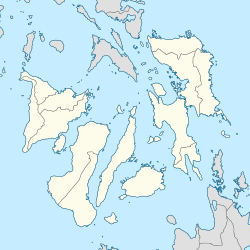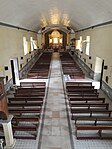
Siquijor, officially the Province of Siquijor, is a Philippine island province located within the Negros Island Region. Its largest town and capital is the municipality of Siquijor. The province lies south of Cebu, southeast of Negros Oriental, southwest of Bohol, and north of Mindanao.

Negros Oriental, officially the Province of Negros Oriental, is a province in the Philippines located in the Negros Island Region. Its capital is the city of Dumaguete, one of the two regional centers of Negros Island Region, with the other being Bacolod. It occupies the southeastern half of the large island of Negros, and borders Negros Occidental, which comprises the northwestern half. It also includes Apo Island, a popular dive site for both local and foreign tourists.

Dumaguete, officially the City of Dumaguete, is a component city and capital of the province of Negros Oriental, Philippines. According to the 2020 census, it has a population of 134,103 people. It is the most populous city and the smallest city by land area in Negros Oriental as well as one of the two regional centers in Negros Island Region.

Valencia, officially the Municipality of Valencia, is a municipality in the province of Negros Oriental, Philippines. According to the 2020 census, it has a population of 38,733 people.
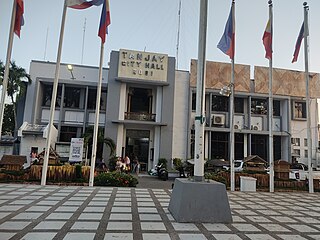
Tanjay, officially the City of Tanjay, is a component city in the province of Negros Oriental, Philippines. According to the 2020 census, it has a population of 82,642 people.
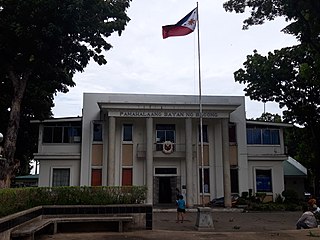
Bacong, officially the Municipality of Bacong, is a municipality in the province of Negros Oriental, Philippines. According to the 2020 census, it has a population of 41,207 people.

Guihulngan, officially the City of Guihulngan, is a component city in the province of Negros Oriental, Philippines. According to the 2020 census, it has a population of 102,656 people. Making it the third-most populous city in Negros Oriental after the cities of Dumaguete and Bayawan.

Santa Catalina, officially the Municipality of Santa Catalina, is a municipality in the province of Negros Oriental, Philippines. According to the 2020 census, it has a population of 77,501 people.

Sibulan Airport, also known as Dumaguete Airport or Dumaguete–Sibulan Airport, is an airport serving the general area of the city of Dumaguete, located in the province of Negros Oriental in the Philippines. It is located 3 kilometers (1.9 mi) north of Dumaguete on a 63-hectare (160-acre) site in Barangay Agan-an in the nearby municipality of Sibulan. The airport is one of two major airports serving Negros Island, the other being Bacolod–Silay Airport in Silay, Negros Occidental.

The legislative districts of Negros Oriental are the representations of the province of Negros Oriental in the various national legislatures of the Philippines. The province is currently represented in the lower house of the Congress of the Philippines through its first, second, and third congressional districts.

The Diocese of Dumaguete is a diocese of the Latin Church of the Catholic Church in the Philippines. Its territory consists of the provinces of Negros Oriental and Siquijor with the exception of the municipalities of La Libertad and Vallehermoso, and the cities of Guihulngan and Canlaon.

The Diocesan Shrine and Parish of Saint Augustine, commonly known as Baliwag Church, is a Roman Catholic church located in Plaza Naning at the poblacion of Baliwag, in Bulacan province, Philippines. The church is a parish church of the Diocese of Malolos, which is a suffragan of the Archdiocese of Manila.

Santa Monica Parish Church, commonly known as Minalin Church, is a Baroque Roman Catholic church, located in poblacion area of San Nicolas in Minalin, Pampanga, Philippines. The church, built during the Spanish era, was declared a National Cultural Treasure by the National Commission for Culture and the Arts and the National Museum of the Philippines on August 27, 2011, one of 37 churches in the country bestowed that honor.
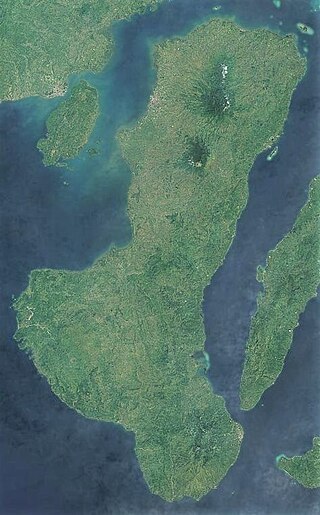
Negros is the fourth largest and third most populous island in the Philippines, with a total land area of 13,309 km2 (5,139 sq mi). The coastal zone of the southern part of Negros is identified as a site of highest marine biodiversity importance in the Coral Triangle.
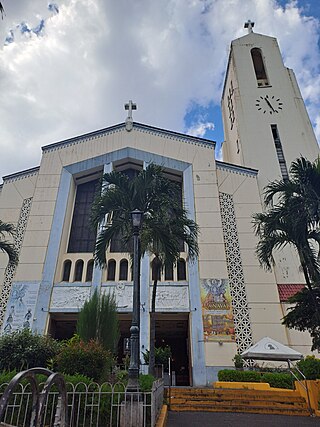
Santo Domingo Church, formally known as the National Shrine of Our Lady of the Holy Rosary of La Naval de Manila, is a Roman Catholic parish church and national shrine in Quezon City, Metro Manila in the Philippines. It is under the jurisdiction of the Diocese of Cubao. Dedicated to Mary, mother of Jesus under her title Our Lady of the Most Holy Rosary — La Naval de Manila, it was founded by the Dominicans in 1587.

San Agustin Parish Church, commonly known as Lubao Church, is a 17th-century Neo-classic, Spanish stone and brick Roman Catholic church located at Brgy. San Nicolas 1st, Lubao, Pampanga, Philippines. It is under the jurisdiction of the Archdiocese of San Fernando. In 1952, a historical marker bearing a brief history of the structure was installed on the facade of the church by the Historical Committee of the Philippines, precursor of the National Historical Commission of the Philippines. In 2013, the church has been declared by the National Museum of the Philippines as an Important Cultural Property.

Julito Buhisan Cortes is a prelate of the Catholic Church in the Philippines. He is the current Bishop of Dumaguete in Negros Oriental, Philippines since September 2013. Before his appointment to the See of Dumaguete, Cortes was the Auxiliary Bishop of Cebu from 2002 to 2013.
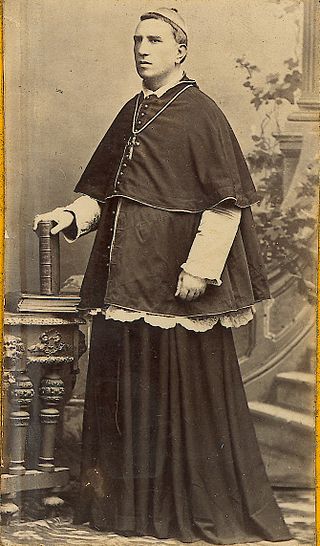
Leandro Arrúe Agudo, O.A.R. was a Spanish Catholic prelate who served as Bishop of Jaro from 1885 until his death. He was born in Calatayud, Zaragoza, Spain, on 13 January 1837 and took vows as an Augustinian Recollect in 1856.

Saint Catherine of Alexandria Cathedral Parish, commonly known as Dumaguete Cathedral, is a Roman Catholic cathedral in Dumaguete, Negros Oriental, Philippines. The cathedral is the seat of the Diocese of Dumaguete and is considered as the island's oldest stone church, having been completed in 1776.

